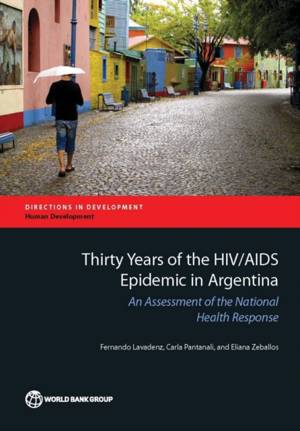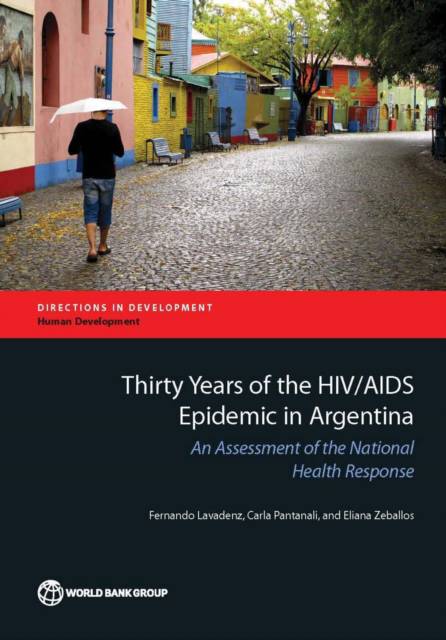
- Retrait gratuit dans votre magasin Club
- 7.000.000 titres dans notre catalogue
- Payer en toute sécurité
- Toujours un magasin près de chez vous
- Retrait gratuit dans votre magasin Club
- 7.000.0000 titres dans notre catalogue
- Payer en toute sécurité
- Toujours un magasin près de chez vous
Thirty Years of the HIV/AIDS Epidemic in Argentina
An Assessment of the National Health Response
Fernando Lavadenz, Carla Pantanali, Eliana Zeballos
41,45 €
+ 82 points
Description
The 1992 creation of the National HIV/AIDS Program was a fundamental step for Argentina to reach the second lowest burden of HIV/AIDS in South America. From 2000 to 2010, Argentina further reduced the already low HIV/AIDS incidence of 15.9 per 100,000 by 25 percent and reduced the burden by 21 percent. This study analyzes the national and inter-provincial burden of disease, the demographics of new HIV cases, the demand and supply-sides of service delivery, and conducts a cost-benefit analysis of the National HIV/AIDS Program over the last decade. Though the National HIV/AIDS Program was an instrumental step towards these achievements, this book also examines other key programmatic innovations that have been essential to the country's success in the fight against HIV/AIDS, including the introduction of universal free antiretroviral treatment; a comprehensive legal framework for sexual and reproductive rights; the introduction of incentives and results-based financing in the HIV/AIDS program; electronic monitoring of supplies and medicines; and implementation of an electronic clinical governance system for improving the quality of care and patient follow-up, among others. Despite high costs of the Program, this study found the Argentine National HIV/AIDS Program is cost-beneficial. From 2000 to 2010, 4,379 potential lives were saved. Nonetheless, the fight against this epidemic poses continuous challenges, including a stubbornly high number of new infections among young men who have sex with men, inequalities in HIV/AIDS rates between provinces, insufficient coverage of HIV diagnostic testing, insufficient HIV testing of tuberculosis patients, low expenditure on HIV prevention, high comparative cost of antiretroviral treatment, and questions regarding the long-term financial sustainability of the AIDS program, considering the increasing number of patients in treatment. 'Thirty Years of the HIV/AIDS Epidemic in Argentina: An Assessment of the National Health Response' delves into the combination of factors that make Argentina a success story in combating HIV/AIDS.
Spécifications
Parties prenantes
- Auteur(s) :
- Editeur:
Contenu
- Nombre de pages :
- 196
- Langue:
- Anglais
- Collection :
Caractéristiques
- EAN:
- 9781464805967
- Date de parution :
- 10-07-15
- Format:
- Livre broché
- Format numérique:
- Trade paperback (VS)
- Dimensions :
- 178 mm x 254 mm
- Poids :
- 353 g

Les avis
Nous publions uniquement les avis qui respectent les conditions requises. Consultez nos conditions pour les avis.






